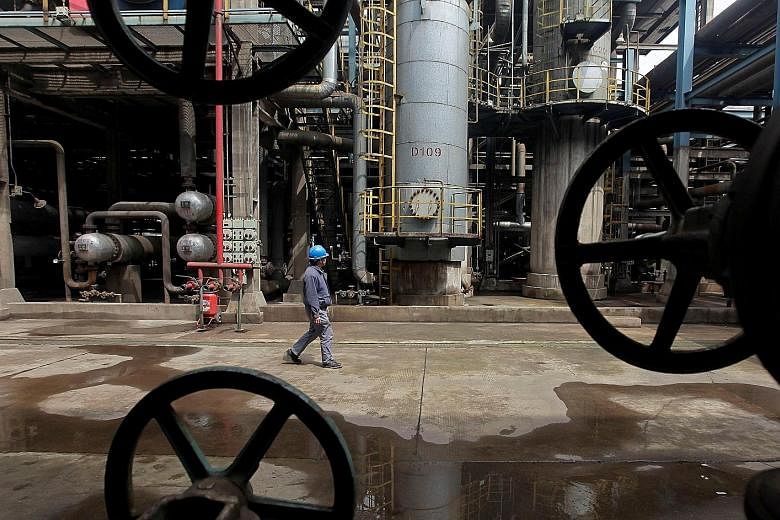LONDON • Commodities revenue at the largest banks had the worst start to a year in more than a decade amid a pullback in financing of raw materials.
Income at Goldman Sachs Group, Morgan Stanley and 10 other top banks slid by a combined 40 per cent year on year in the three months to March to US$1.1 billion (S$1.5 billion), according to analytics firm Coalition, which tracks commodities activities, including power and gas, oil, metals, coal and agriculture.
Revenue shrank as banks scaled back hedging and financing deals and their hedge-fund clients pulled out of commodities, said Mr Amrit Shahani, a research director at Coalition.
With oil tumbling 54 per cent in the past two years, many energy firms have struggled to stay afloat, putting into question banks' lending to the industry.
JPMorgan Chase, Bank of America and Citigroup said last month they were setting aside more money to cover losses from energy loans following oil's collapse.
"It was a very slow quarter," Mr Shahani said over the telephone.
"The issue with the credit rating of the energy companies really became a problem in 2015. It's come under a magnifying glass in 2016."
US oil prices crashed below US$27 a barrel on Jan 20 for the first time since 2003, but ended the quarter near US$40.
Benchmark copper prices hit a 61/2-year low of US$4,318 a tonne on Jan 15, before climbing 12 per cent to end the quarter at US$4,847, or a rise of 3 per cent from the end of last year.
In contrast to energy, banks' business in precious metals performed "significantly" better following increased investor demand, according to Coalition.
Spot gold rallied 16 per cent in the first three months of the year, locking in its biggest quarterly rise in nearly 30 years. The gold surge was driven by concerns about global growth, which battered equities and sparked a wave of safe-haven buying.
Moody's Investors Service said early last month that banks would need an additional US$9 billion to cover souring oil and gas loans in a worst-case scenario.
However, Citigroup analysts predict that the commodities market has turned a corner, and prices are unlikely to return to lows hit in the first quarter.
The bottom was likely hit this year, when weak fundamentals across all commodities were reinforced by bearish selling after the collapse of China's equity markets, Citigroup analysts including Mr Ed Morse wrote in a report yesterday.
The bank is now predicting Brent oil will climb to US$50 a barrel in the third quarter.
The agriculture sector appears to be on the verge of re-balancing, Citigroup said, increasing its price forecasts for corn, soya beans and sugar.
The optimism does not extend to bulk commodities, particularly iron ore and thermal coal, with the bank forecasting low prices enduring through 2018.
BLOOMBERG, REUTERS

